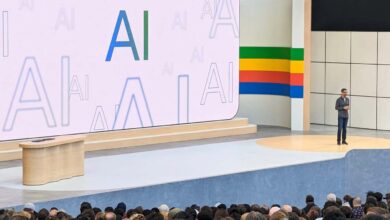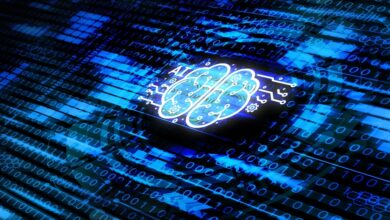The Era of AI – A Renaissance or Revolution for Healthcare?

The advent of Artificial Intelligence (AI) portends a potentially monumental shift in the history of human civilization, an inflection point that urges us to pose a profound question.
Are we in the midst of a renaissance of human creativity, rich in artistic and intellectual flourishing, or will AI’s rapid advancement lead to a revolution that fundamentally reshapes industry sectors, government institutions and the structural dynamics of human society?
A renaissance, derived from the French word for “rebirth,” is characterized by a revitalization of culture, art, and knowledge; marked by revisiting and rethinking classical philosophies that lead to new and profound discoveries and an embrace of new perspectives.
On the other hand, a revolution connotes a more radical and potentially tumultuous and disruptive shift in society. Often abrupt and replete with fundamental shifts in the way societies operate, revolutions upend established governmental, economic, and socio-cultural frameworks to establish new norms.
The rise of AI would seem to bring numerous benefits to healthcare, such as true precision medical care, dynamic forecasting and advanced precision analytics. Yet, how will these powerful new tools coexist with existing challenges such as medical data privacy, meaningful use regulations and the move to value-based care?
Traditional AI vs. Generative – Gamechanger
Prior to determining whether AI will bring about an era of renaissance or revolution, it is essential to grasp the distinctions between traditional AI and generative AI. Indeed, the latter has been made widely accessible to the masses. Traditional AI is rule-based and involves the use of algorithms programmed for specific tasks. The results are derived based on specific pre-defined rules and logic for solving problems. An example would be a streaming radio station recommending songs based on your previous selections.
Traditional AI systems tend to be specialized as opposed to generalized. They have the following characteristics:
- Limited scope and learning ability
- Rule-based processing
- Domain-specific and specialized applications
- Transparent and explainable
What has changed today is the large-scale availability of generative AI. Generative AI technology can create content – including text, video, audio, images, computer code and more by processing and being fine-tuned on vast amounts of training data and generating new, original content based on similar characteristics.
Generative AI technology, on which Large Language Models (LLMs) are based, are not bound to specific applications. It is generative and has the following characteristics:
- Generalization
- Variability and versatility in learning and usage
- Customization/personalization
- More natural conversational abilities
Expected Advances in Generative AI in 2024 and Medical Use Cases
Generative AI technology is continuing to develop at a breakneck pace. Indeed, its rapid development trajectory is being guided by few guidelines and guardrails, which is one reason the technology is potentially so revolutionary. I expect to see six significant advances before the end of this year.
- More powerful LLMs
- Smaller language models designed to fit onto mobile devices
- Multimodality
- Improved reasoning
- The rise of synthetic data and improved data quality
- Personalization
These six advances have the transformative potential to chart a course toward a future of either significant revolutionary change or a renaissance that ushers in a new age of enlightenment. Let’s take the field of health care as an example. These technological advancements in generative AI can potentially revolutionize medical practices and health care.
From a revolutionary lens, advanced predictive analytics, based on more powerful LLM’s, more quality data, and improved reasoning, can alter the speed and precision of personalized treatment plans. Moreover, the intersection of AI with pharmacology could potentially result in real-time analyses of drug interactions and contraindications, fundamentally changing the landscape of medical management. The continuous real-time monitoring of treatment regimens could empower healthcare providers to anticipate and respond to side effects with unprecedented speed and accuracy.
These are revolutionary aspects where AI can alter the analytical, operational, and managerial landscape to deliver quality care through AI’s integration into the fabric of our healthcare systems.
Yet, the same AI advances mentioned above can result in a paradigm shift in the knowledge framework of medical practitioners, where healthcare professionals are intellectually enriched in ways that inspire them to reimagine the treatments of patients. For instance, the advanced reasoning of AI applied to rapidly synthesizing and comprehending large quantities of medical literature can offer new insights into patient care; likewise, personalized data models can enable researchers to glean tailored treatments more suited to patient needs. Multimodal AI systems capable of processing and interpreting a variety of data, from genetic information and imaging to behavioral factors and complex charts, can guide practitioners to make more informed decisions. Advances such as these create cornerstones based on new knowledge, collective wisdom, and cross-disciplinary collaboration within a medical community augmented by the power, speed and fidelity of AI.
This human-enlightened environment ushers in new medical insights and reshapes approaches to health and wellness. Indeed, this latter potential path to achieving holistic, human-centric care keeps human professionals at the center of health care delivery, enlightened with the augmentation of AI’s enormous capabilities, while the former is more revolutionary, with AI potentially taking center stage.
Which path is the most likely? Are we forced to select a path, or can we have both a renaissance and a revolution where we achieve a balance between the disruptive revolutionary aspects of AI with a renaissance of securing a collaborative, human-centered and ethical healthcare delivery system?
Answers to these questions are often shaped by how we address the challenges of a new technology, and how we devise and implement policies to control that technology’s advancement and implementation.
Challenges and Policy Implications
AI’s rapid advancement poses a complex set of challenges with significant societal and policy implications that can determine the path forward toward an AI renaissance or revolution. One of the most important challenges is how we ensure AI’s ethical and responsible use.
Alignment issues, along with concerns of privacy, security and surveillance augur the potential for significant misuse of the technology to adversely affect health care development and delivery. Misinformation and disinformation spread through the use of deepfakes, and hallucinations continue to be an ongoing concern.
Indeed, never in history has a new technology presented such starkly different outcomes for medicine and society at large. Generative AI commoditizes the processing power to enable true personalized medicine, but also contains the risk that technology becomes more central to the mission of healthcare than what’s best for the patient.
Moreover, few times in human history has technology advanced so quickly once it has been democratized. AI development is advancing monthly, not yearly, as we have experienced with other new forms of technology. In a highly democratized and accessible AI environment, how do we control the deleterious effects that can be so rapidly disseminated and felt across the arc of society?
At the same time, an AI revolution without a thoughtful policy process could cause significant economic and social impacts, widening wealth and economic inequalities as job displacement occurs with the rapid implementation of cheaper and more effective AI solutions. As AI is integrated into the workplace, it could substantially supplant the human workforce, causing the disappearance of hundreds of thousands of jobs in the healthcare sector.
Currently, few policies exist in the US to provide effective oversight and control of AI development, Additionally, the costs of using Generative AI are so low, that accessibility in harnessing AI for good or for ill is highly available.
We as a political system are also unique in that the United States operates under a system of American Federalism, dividing power and authority between the federal government and the 50 states. Issues related to the responsible use of AI, and the degree of authority on the part of the federal or state governments to settle those issues, have yet to be discussed in the policy community, much less determined.
Finally, addressing the policy issues only within the context of an “American Policy Solution,” while necessary, is not sufficient. International cooperation, guidelines and policy measures are vital to controlling AI’s more adverse effects on the human population, including healthcare research and delivery.
Conclusion
It is vital we make the right choices as a society before we lose the ability to control the path in which AI will take. Indeed, an AI renaissance will keep humanity at the center of human achievement, societal advancement, and holistic healthy communities.
An AI revolution could see humans regulated to the periphery, questioning our place and purpose in a society where digital intelligence is the primary overarching force in governing social order, affecting our economic, health, and social livelihood.
About Robert L. Gordon III
Robert L. Gordon III is the Senior Strategic Leader for AI and Digital Innovation at DSS, Inc. He is a former professor and head of American Politics at the United States Military Academy at West Point, a former Deputy Under Secretary at the Department of Defense, and a retired Colonel. Robert is also a former White House Fellow under Presidents George Bush and Bill Clinton.



